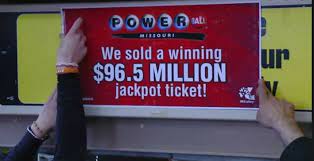There are hundreds of strategies that claim to hit the jackpot prize for Powerball 5/53. This can be really enticing! Imagine winning to as high as $45 million! Spending more than $1.2 billion in Powerball 5/53 alone! But do you know that the real chances of winning the Powerball 5/53 is very slim? Some estimates say by now, you can win as much as $380,000 (less if you roll over on your Super 7 entry). Ah, to be young and idealistic.
If you are asking, “Can I win the Powerball 5/53?,” the answer is a resounding “No.” The reason is, to win the Powerball 5/53, you have to have all the luck. And, If you don’t believe me here, just watch the millions of dollars that some people spend on the lotto each week. At least you can say that you have not participated in those lavish spending sprees.
But, it does get better. There is a way to improve your chances of winning the Powerball 5/53. Although it’s not an assurance to win the jackpot, it is one that can greatly improve your chances. The way to do it is by adhering to the laws of probability.
Most people tend to play patterns and sequences when selecting their numbers. They have a notion that the more often a number or set of number appears in a winning draw, the more of a chance it has of winning again. This quite possibly leads to the development of a theory of probability.
However, if you want to improve your chances of winning the Powerball 5/53, you need to use what’s called a balanced card. An balanced card is one where the numbers are in random order and combinations. Here are a couple of examples of when to balance a card:
- 3 or 4 numbers:1,2,and 3
- 5 or 6 numbers:2,3,and 4
- 5 or 7 numbers:1,2,and 4
The last example above demonstrates that if you pick a card, you’ve already decreased your odds of winning. In this case, when you see 3,4,and 5, re-raise the pot to $3. There are 3,4,and 5 in the deck. That’s still a lot of numbers, but not as many as you had in the example from before. Now, say you hold the 8 and 2, and the flop comes out 8, Q, K. You now hold the best hand so far. You haven’t shown any weakness. You are drawing out on a strong hand. Now it’s time to bet aggressively. You bet $6. The $6 is much more than the original $3 that you initially put in. Now the $6 pot odds are much more enticing. You should bet a little more, like $10 or $12. Sometimes you will have to go to the undesirable end of town and lose a big pot. The important thing is that you paired one card. Your odds of drawing that card are now 1 in 8. That’s 2 to 1. If you had to bet $6 to win $12, you will have to risk $12 to win $6. It’s a good time to tighten up.
An alternative way to look at card counting is to determine your outs, or the number of cards that would be most likely to be dealt to you after you make your hand. Here are the numbers that I currently use to count my outs:
Outs = 17uy + 2eint + 3min + 5max
In my box betting, I simply count 17 times the amount of the pot, which gives me a total of 32. In essence, that’s 17 calls + 32 calls = 52 successful plays. You will have to tune your card counting to convert the number into a percentage.
On the other hand, my real life card counting is a bit more sophisticated. I have a iPod so I can balance it out so I don’t have to remember the runs. Rather than keeping the running total every time, I maintain a running total on the river. If I have a flush draw, I will count it as whether I have five cards or fewer. I treat all four cards in my hand as being the same, regardless of whether I have two cards or three, or even one.
When I apply the mathematics of probability to playing 7meter, I can come up with some surprisingly good predictions of what other players may have. Indeed, there was aitan at a land based tournament I played in years ago. He loved trouble and loved theicks. He could do the math extremely fast, but I noticed that he would always, always, always draw to the pocket rockets and I could smell the money.
